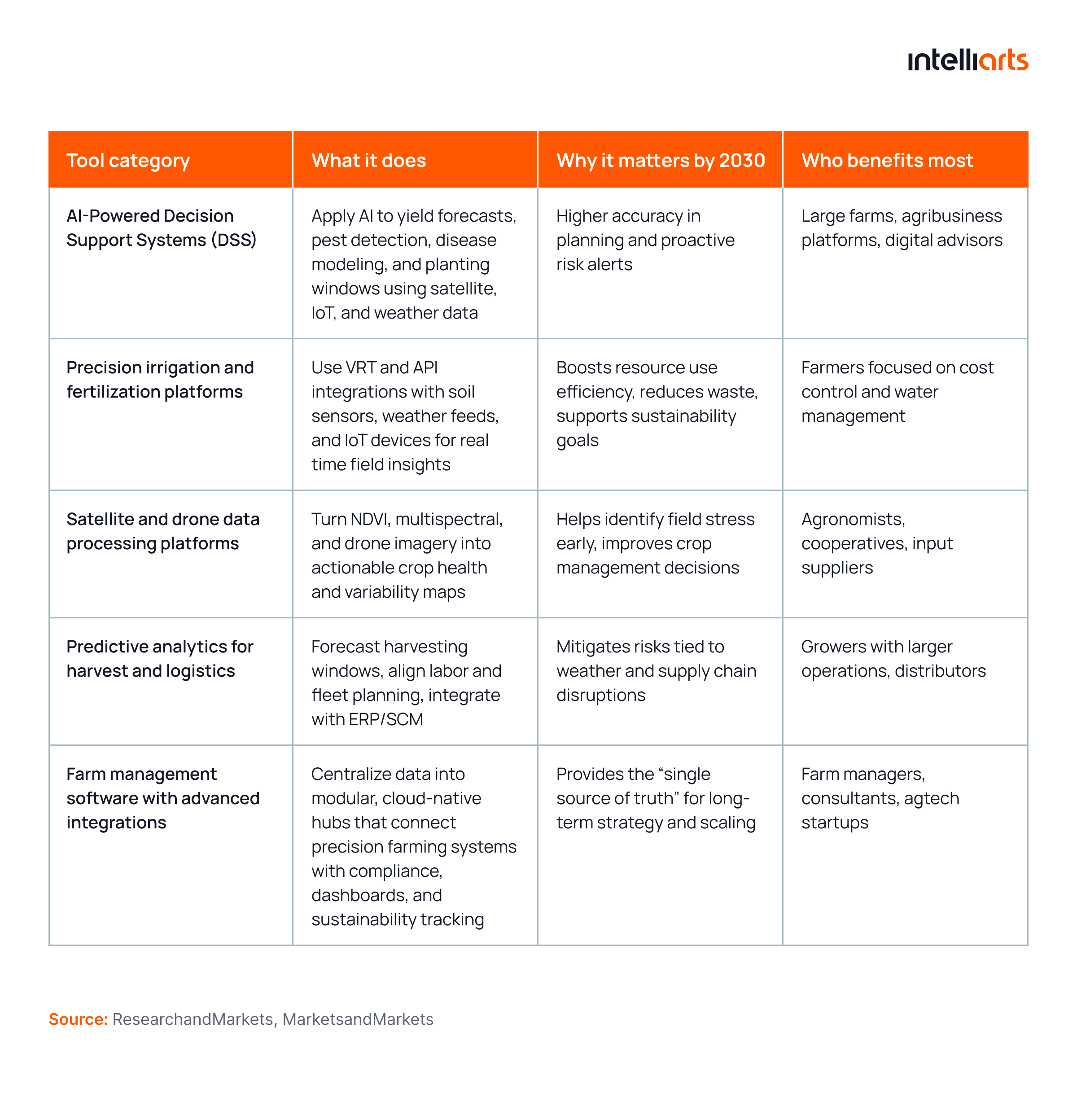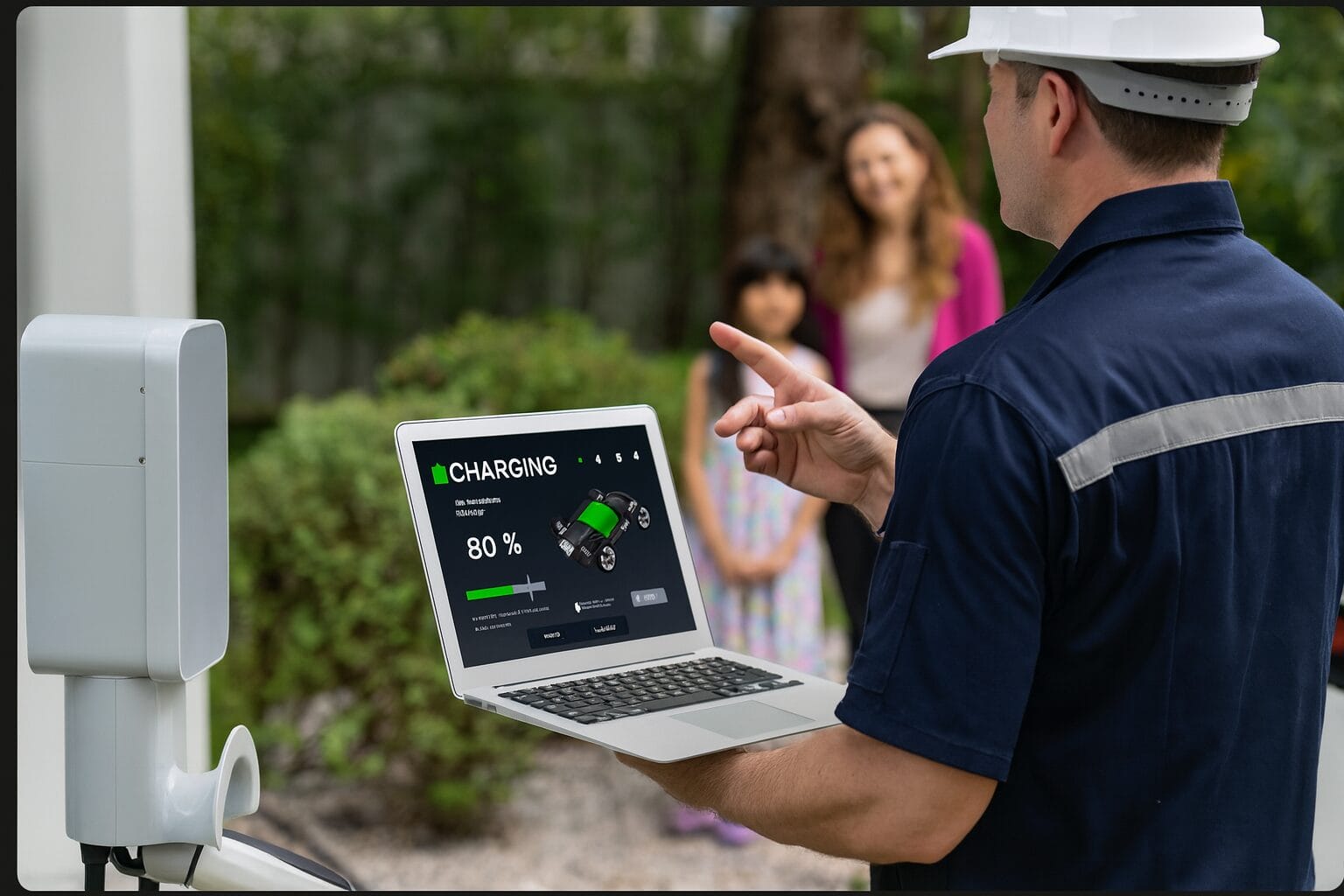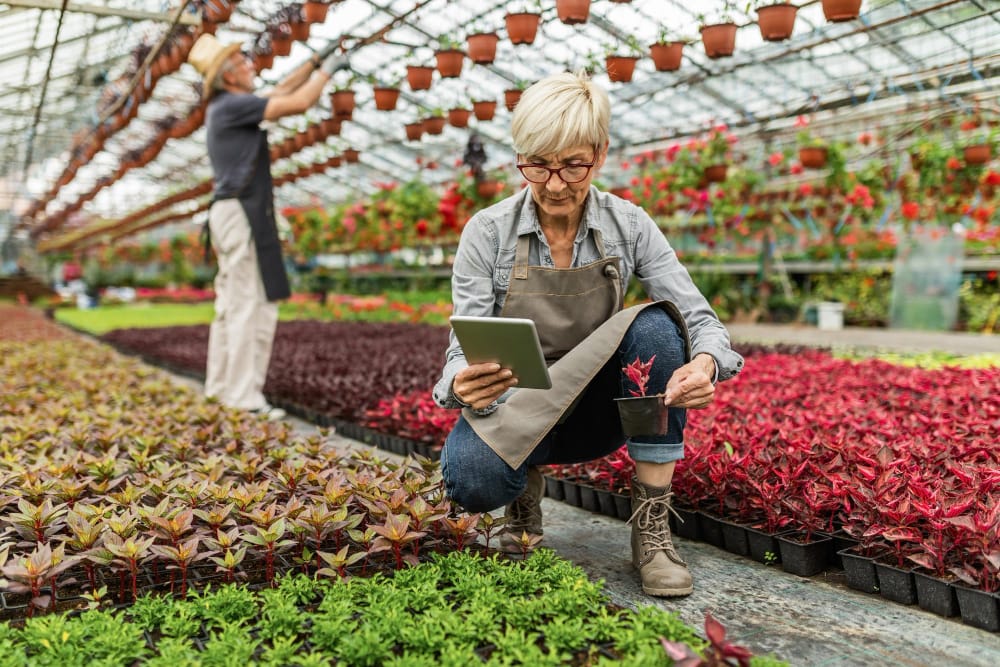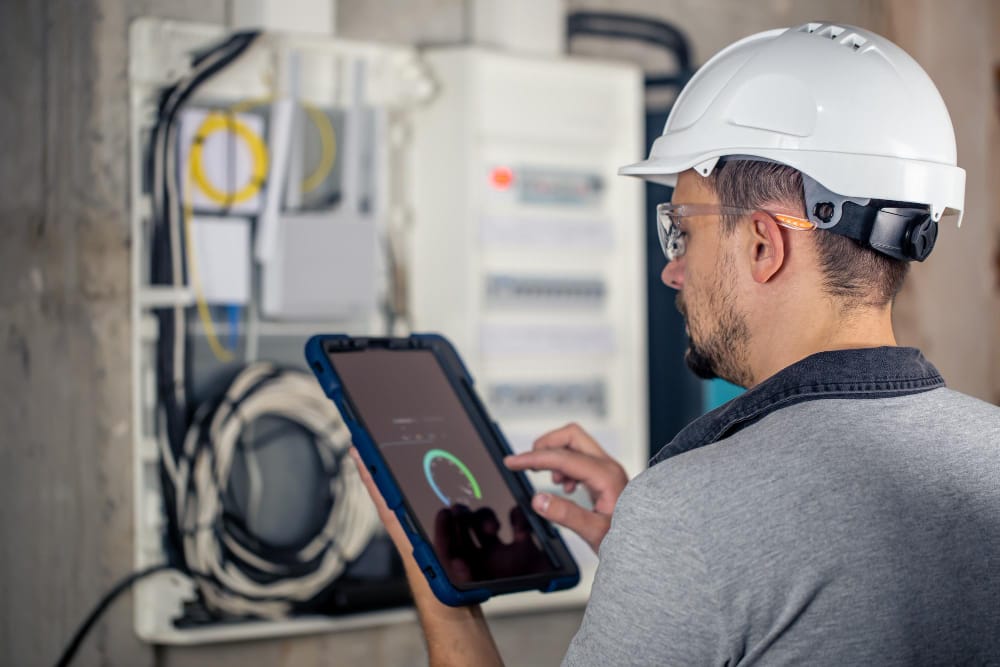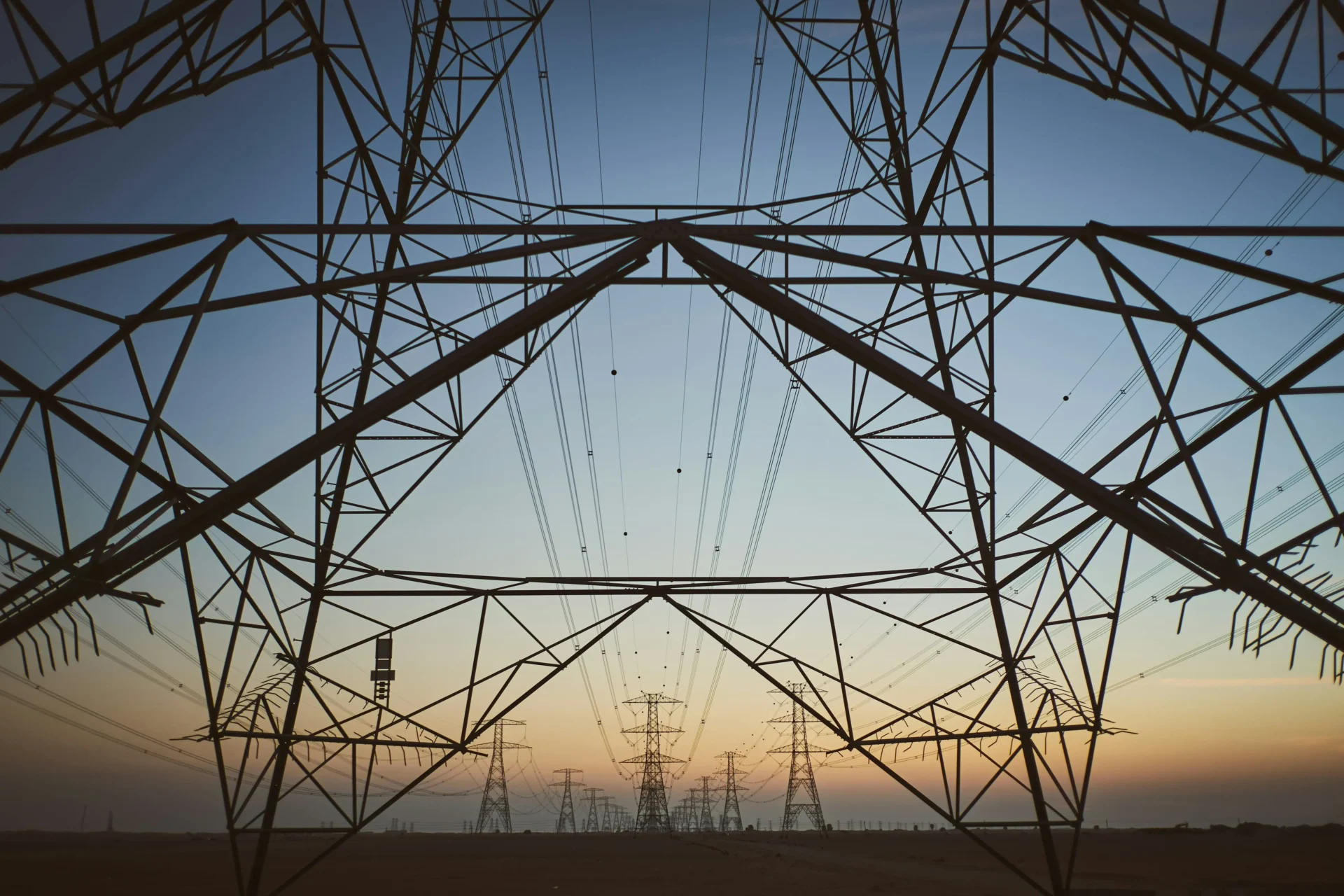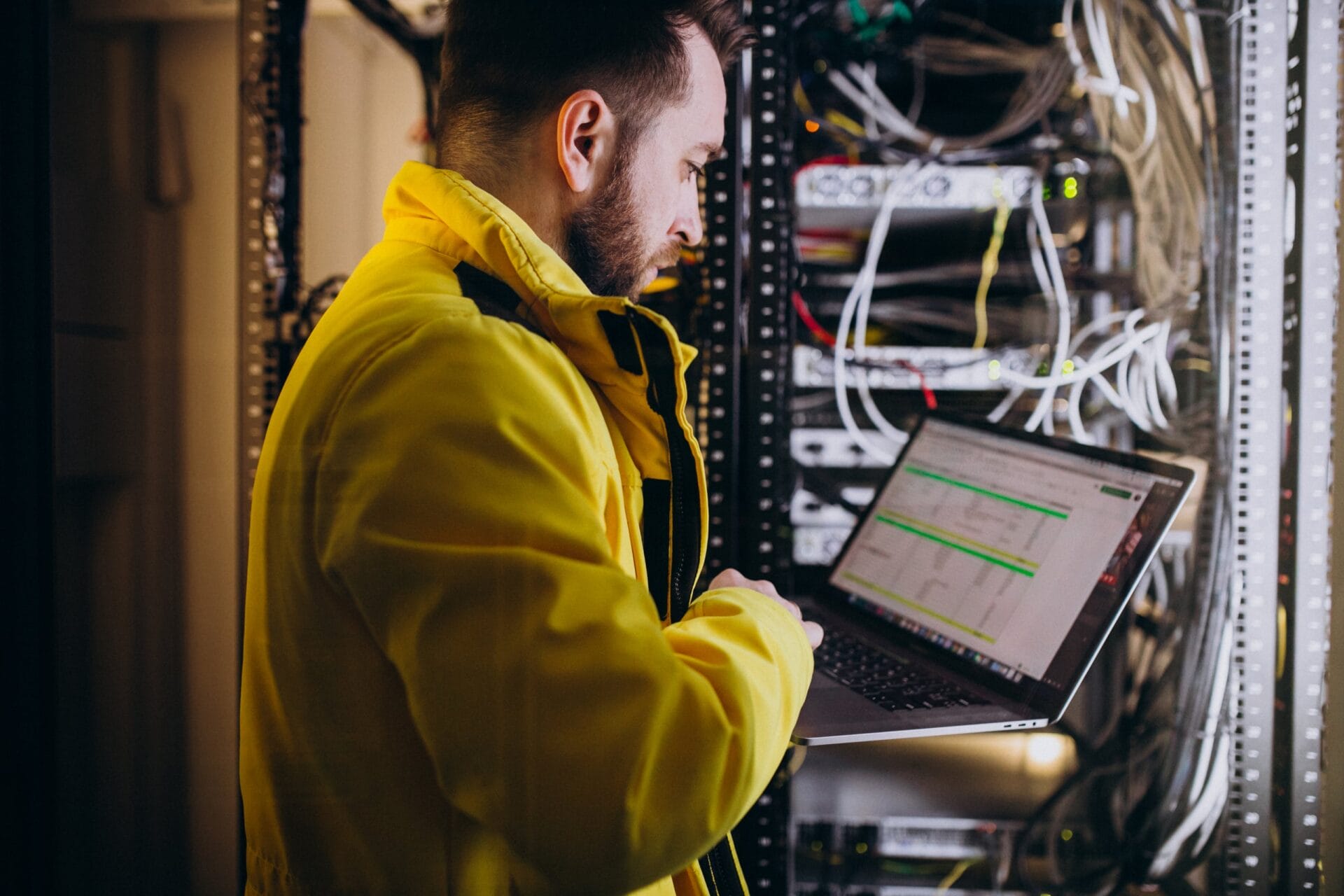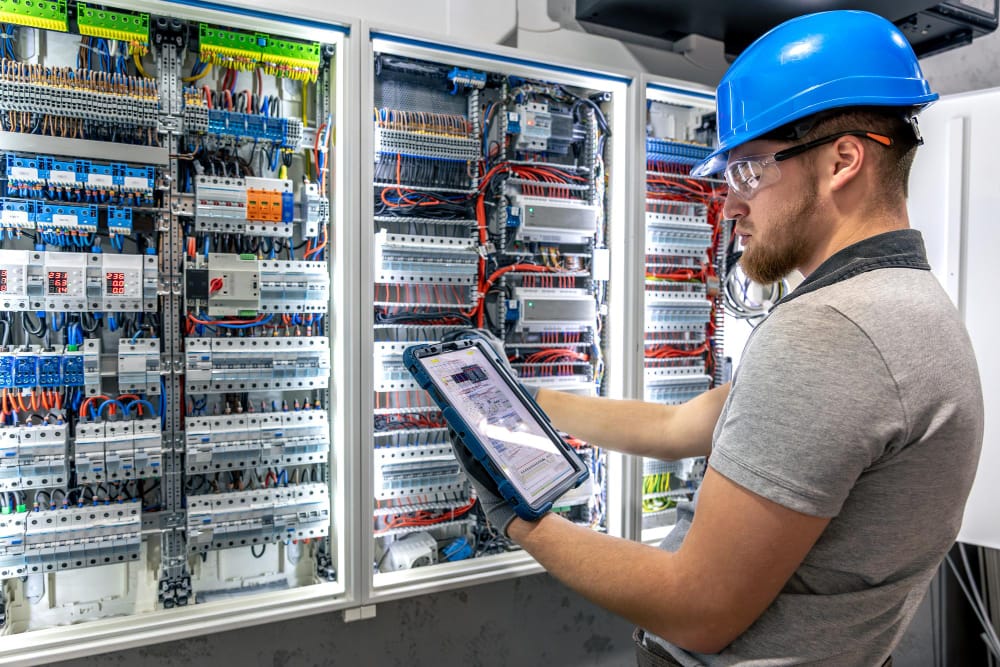Over the last few years, agribusiness has been spending a lot of money on precision agriculture systems, such as GPS-guided tractors, soil sensors, and drones. Useful, yes, but often siloed. Markets and Markets projects the precision farming market to exceed $21 billion by the end of 2032 alone with a CAGR above 9.5%. But the actual change is happening to ag technology software solutions, which link these tools, process the data, and assist managers in making confident moves.
In this article, we will analyze the top precision agriculture tools that are relevant today: AI-based decision support systems, predictive irrigation platforms, satellite data analytics, and farm management software with advanced integrations. It is not the hardware that brings them together, but the intelligence.
Top software-driven tools leading precision agriculture by 2030
If the question is what is precision agriculture and why is it important, the short answer is unified data turned into timely action. Agribusinesses and farmers are now making more difficult decisions than ever before: how much water or fertilizer each zone requires, which fields to treat first, when to harvest as the weather changes.
Precision agriculture tools make such calls easier by converting real time information into understandable measures and consistent grower data collection as showcased in our case study. For example, NDVI (Normalized Difference Vegetable Index) makes use of satellite or drone imagery to display crop wellbeing, while VRT (Variable Rate Technology) adjusts inputs like fertilizers or water on the go. As AI crunches such streams of data, farms operate in a more efficient, greener, and more profitable way.
These categories illustrate how precision farming technologies and equipment are no longer about isolated tools. They represent connected, software-first ecosystems where data analytics drive every decision, from when to irrigate a row of wheat to how to schedule trucks for delivery. Below are precision agriculture technology examples that key agricultural players will focus on in the next few years.
AI-powered decision support systems
In simple terms, the AI-based decision support systems connect satellite images, IoT sensors, and past weather and soil data in order to make daily farming decisions. They are able to signal possible plant disease outbreaks and predict the pest threats and yields with remarkable precision. For example, a Plantix app could detect up to 120 species of pests by the end of 2023, and the efficiency is only growing. As a more recent example, see our AI applications in agriculture use cases that map detection to decisions.
These insights allow farmers to change the planting schedules or crop rotations before the issues emerge. It does not replace judgment. That said, what works in one field may not work in another, yet it provides managers with a better idea and lessens unexpected events in the season.
Precision irrigation and fertilization platforms
The prices for water are rising, and the prices of fertilizer are not going down either. Precision irrigation and fertilization platforms address this challenge by combining VRT with agronomic modeling of various streams of data. Multiple data sources provide the most benefit for farmers in this case and integrate data from soil moisture sensors, weather forecasts, satellite images, and historical yield maps. Based on these inputs, the software determines the time of irrigation, depending on the stage of the crop, weather forecasts, and water supply when soil sensors detect stress in a particular zone.
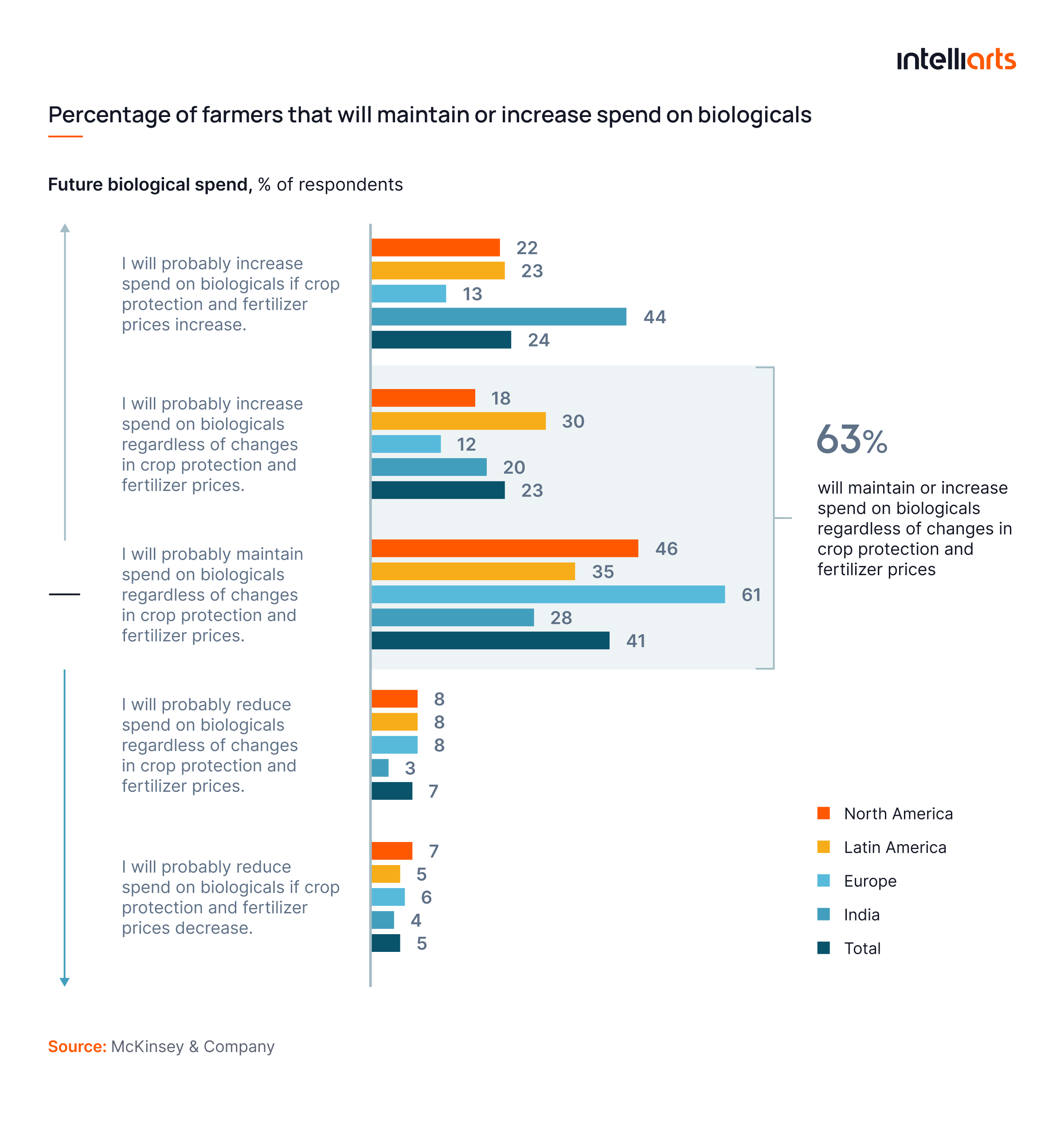
In the case of fertilizer application, precision irrigation and fertilization platforms consider the rate of nutrient uptake, soil variability, and yield potential. It is not about perfection but efficiency. There is a decrease in input costs, and resource use is improved in most of the operations. The sustainability information assists in certification schemes as well.
Will it address all irrigation issues? Probably not. Nevertheless, it reduces stress levels when making decisions at critical growth periods. The majority of the operations payback in 12 to 18 months. Others require more time when their disciplines are more complicated.
Satellite and drone data processing platforms
Satellite and drone platforms become the key in perceiving crop health by 2030. Through aerial survey, these systems can offer vegetation maps, indicate stressed regions and patterns across fields that cannot be observed when one walks the land.
What they do:
- Monitor health of track plants by using such indices as NDVI and SAVI (Soil-Adjusted Vegetation Index) to identify which areas are performing well and which require maintenance.
- Detect stress on the spot in some cases up to 10 days before the manifestation of symptoms and, thus, provide farmers with time to respond.
- Integrate various forms of imagery, such as near-infrared and thermal, to develop a more comprehensive view of plant condition.
Why it matters:
These systems combine wide-satellite coverage and high-resolution drone shots, providing both an overview of large scale and small-scale field information. The outcome is intelligence which functions on individual plants to whole regions.
Real results:
Farms with NDVI and multispectral analytics have a 12-20% increment in yield and a 30% decline in field scanning. In a case in Europe, the outbreak of diseases was identified 1 week before using the conventional means, which saved time and resources.
2025-2030 upgrades:
- The systems today are implemented in a browser, provide AI notifications about anomalies and can be integrated with farm management software like sensor inventory management systems or land sampling automation solutions.
- Farmers can exploit advanced remote sensing without having a dedicated team of GIS.
Field teams can also streamline sampling as shown in our land sampling automation case study.
Predictive analytics for harvest planning and logistics
Farmers need to have a plan of harvesting crops to market in the appropriate time when sensors and images have not even opened better harvests. Predictive analytics systems utilize the health and field-variability data of NDVI systems and transform it into actionable harvest schedules. Also, they:
- Determine the optimal time to harvest and where to deliver, with accuracy from 87% to 98% according to recent studies.
- Consider previous harvest data, weather projections, and available workers to generate executable harvest calendars and routing plans.
- Sync farm software (Enterprise Resource Planning/Supply Chain Management) so harvest figures automatically flow into storage and shipping plans, which studies associate with a 30,4% increase in total economic benefits.
- Predict delays such as bad weather or truck shortages and surface mitigation options in advance.
- Reduce guesswork for crews so less time is spent speculating and more on picking at the right time.
Farm management software with advanced integrations
Why is precision agriculture important? By the end of 2025, farm management software is no longer a record keeper. It has turned out to be a key point of convergence of equipment data, records of compliance, sustainability, and real time field updates. Managers no longer have to balance spreadsheets and disintegrated systems and can immediately have the full picture.
Modern platforms are cloud-based, which means you can monitor the performance of your farm at the office or in the field itself. They are modularly designed so that you can begin with a small tracking base and add predictive analytics as you scale. The API-first architecture enables easy integration of tractors, drones, sensors, and other precision farming equipment, including a sensor inventory management system like the one we developed.
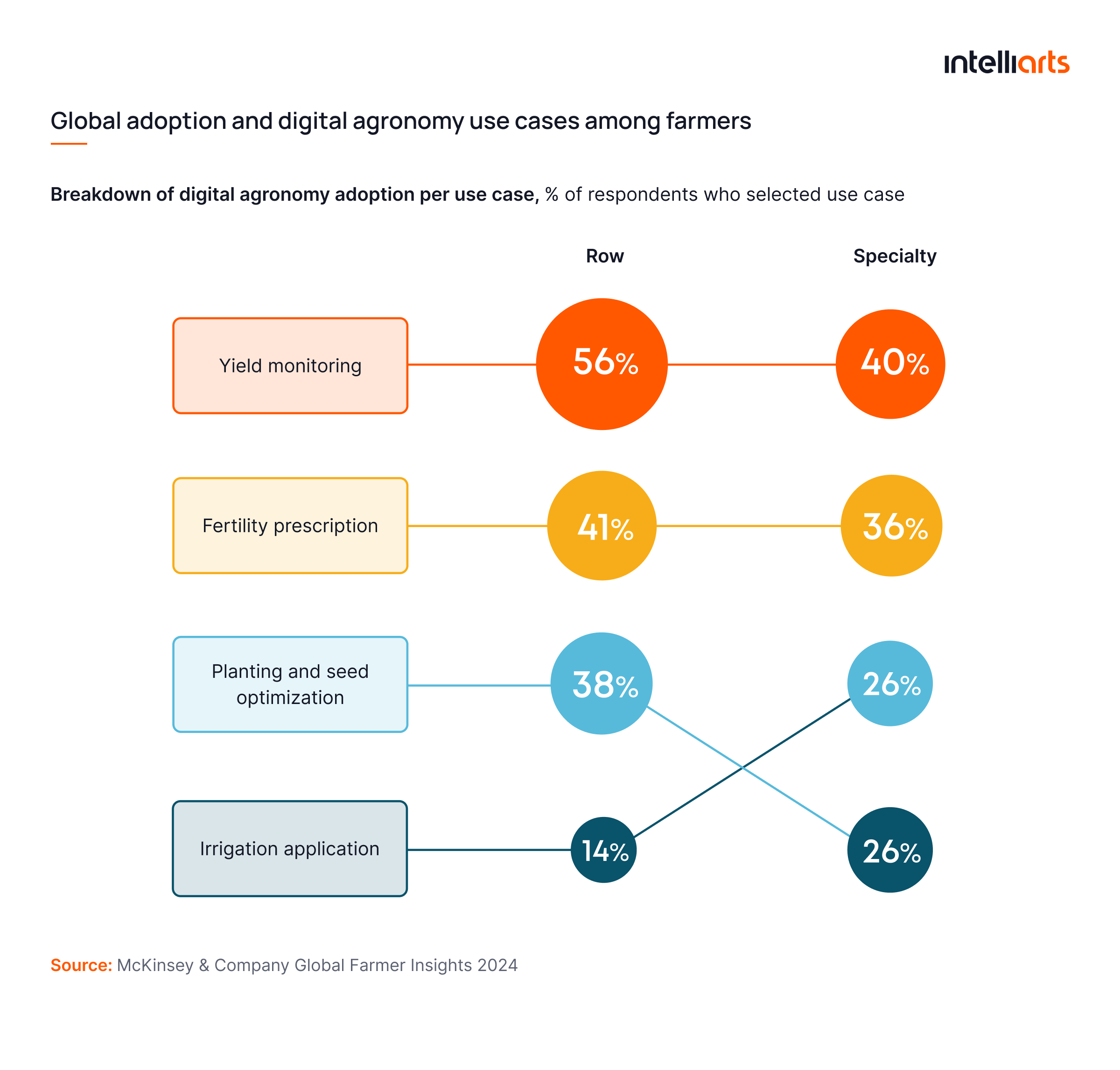
In practice, dashboards combine satellite imagery, soil measurements, and weather projections to show the area where intervention is most required. Automation also saves time: certification reports that once took hours can now be generated in minutes, while equipment logs record all passes, fuel consumption, and maintenance notifications. Sustainability modules go further by calculating carbon footprints and creating ESG (Environmental, Social, and Governance) reports automatically, supporting both compliance and long-term farm strategy.
Farms with such precision farming systems can switch field observations to reports quicker if they have access to high-speed internet, which allows managers to be assured when they go to audit.
Techniques and trends making these tools smarter and more valuable by 2030
Precision agriculture technologies, along with every new technology in agriculture, are further enhanced when the data is more detailed, the models are localized, and the system is simple to combine. That is the trend that will have the most momentum by 2030.
Core trends and solutions shaping precision agriculture by 2025–2030 include:
- Real-time remote sensing and crop sensors: Precision agriculture equipment and devices rely on continuous data streams to guide crop management decisions more accurately.
- Geospatial fusion: Satellite imagery, drone surveys, soil sensor, and GPR (Ground Penetrating Radar) data are combined into a single field view, providing precise insights into crop health.
- Region-tuned machine learning: Forecasting models are trained on local weather, soil, and yield history.
- Prescription mapping: This technology converts predictions to zone-based irrigation and nutrient plans.
- API-first integration: The API-first design is the standard of equipment, sensor, and ERP connection to integrate with low friction.
- Edge-plus-cloud processing: this helps maintain both speed and depth in the field and analysis respectively.
What this unlocks for teams:
- Earlier identification of stress with sufficient lead time to take action before crop yields are affected.
- Optimization of resource utilization with variable rate behavior that is in line with the actual field conditions.
- Less contaminated sustainability and compliance audits and buyer programs.
- Reduced swivel-chair processes, as data does not flow back to the field to report.
The adoption of new tools is only going to grow, with regions like North and Latin America leading the way, according to the McKinsey and Company 2024 global farmer insights survey.
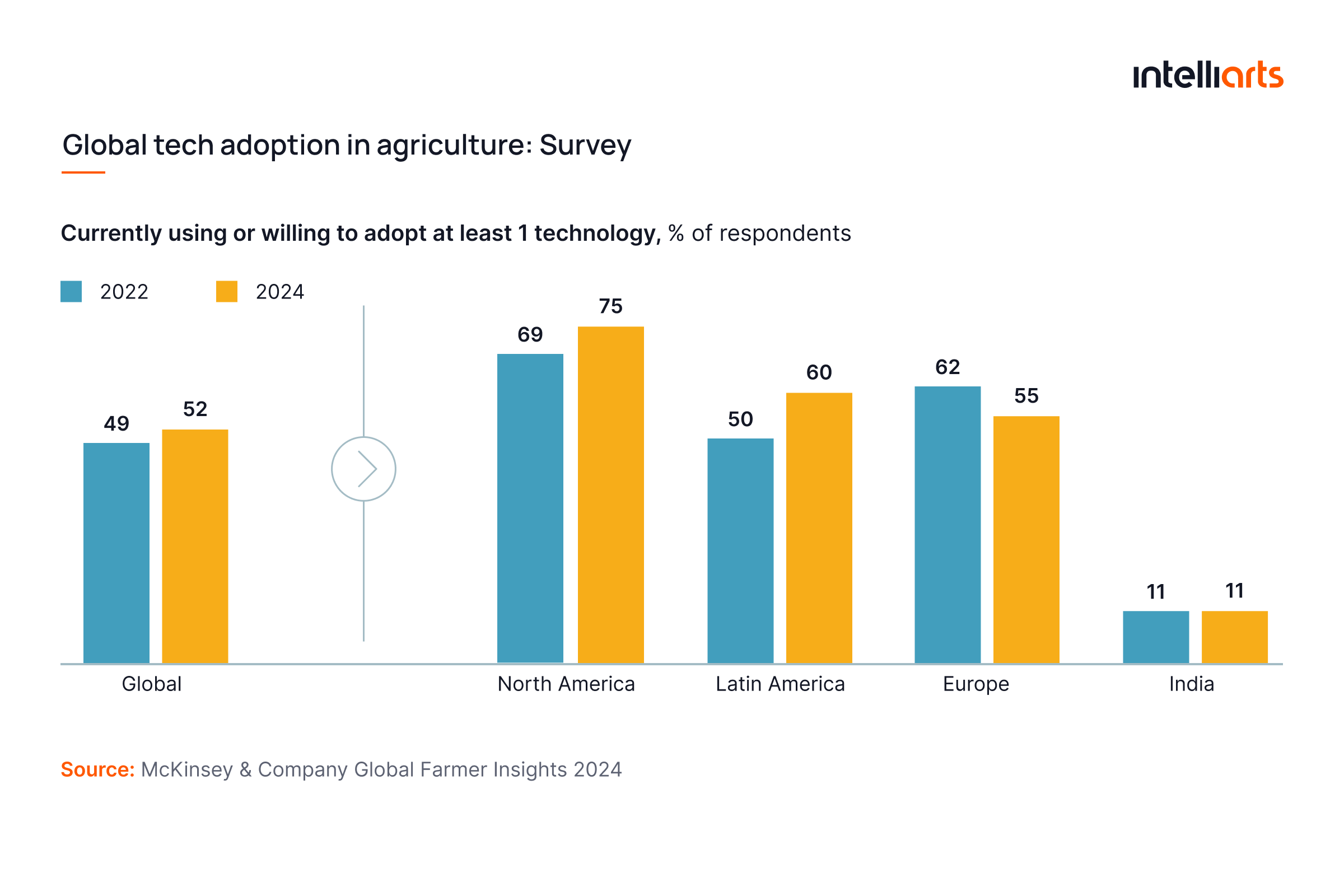
Now let’s consider these core tech innovations in more detail:
Remote sensing and geospatial data fusion
Technology and agriculture were always tightly connected. No longer does remote sensing in agriculture imply that a field scout will come back with notes. It simply means that farmers can now see live maps that are combined with satellite images, drone drills, alongside soil probes or weather station data. Combining multispectral, hyperspectral, thermal, and radar input can provide a system of this type with an ability to see leaf color, soil moisture, and canopy structure in surprising levels of detail.
The integrated perspective enables managers and farmers to move down from regional snapshots to specific corners of a field effortlessly. Similarly, satellites are able to cover large areas and emphasize stress patterns, drones take high-resolution images, and ground sensors provide the missing context. This data is then digested into useful maps that either direct irrigation, nutrient modification, or specific scouting.
Studies have shown that when drone and satellite data are combined, crop stress can be detected much sooner than usual, yield predictions can be made accurately, and the precision of classification can be enhanced. For farmers, it can lead to improved decisions made much faster, allow for better utilization of inputs, and improve records of sustainability programs.
Machine learning for pattern recognition and forecasting
Smart ML models trained on local weather, soil, and crop history can now pick up the subtle rhythms of each farm. To put simply, they cut down the amount of false alarms and sharpen yield forecasts. Here’s a brief breakdown of what pattern recognition model does:
- Local data causes the model to take notice of what actually matters in a particular climate and soil, therefore, predictions are grounded in reality.
- Images and sensors provide early warning to farmers with days of additional lead time to combat pests or plant diseases.
- Prescription maps convert forecasts to zone by zone water and fertilizer rates, which, in turn, can save resources.
- Resource planners can get more exact dates on harvest crews, trucks, and storage.
- Explainable AI tools like SHAP and LIME can show which factors are driving each alert, so agronomists can trust and refine the advice.
API-first architectures and integration flexibility
Modern ag technology stacks touch satellites, IoT sensors, machinery, and business software. An API-first design keeps these parts talking without expensive custom links. Specifically:
- Cloud APIs pull satellite, sensor, and farm-management data into one place.
- Edge computing handles instant alerts and machine controls when the internet is weak.
- Modular, cloud-native services let farms add compliance or sustainability tools without rewriting the core system.
- Strong authentication and audit trails protect sensitive field and business records.
The result is faster reporting, smoother workflows, and a platform that can grow from a pilot to an enterprise network without breaking stride.
Off the shelf or custom?
If your goal is to get your systems running this season, then an off-the-shelf solution is often enough. However, if your goals are more long-term that allow you to get better forecasts, tighten your current integrations (or add new ones), and ultimately get better compliance then a custom path tends to pay off.
What it boils down to is speed is valuable, but fit is priceless. Start with speed and invest in the fit where you need it the most. When fit matters, our agriculture custom software development delivers the exact models and integrations needed.
Here are a few simple rules from the Intelliarts experts you can follow if you are still deciding:
- Go off‑the‑shelf for standard record‑keeping, basic analytics, and quick wins.
- Build custom for unique crops, regional models, or multi‑system integrations across sensors, satellites, and equipment.
- Blend both when a farm management core is solid but needs custom AI and ERP or SCM links.
In the case of a custom solution, you can get more than that. Usually we are talking about:
- Data analytics that reflect local conditions, improving decisions and resource use on the ground.
- APIs that keep imagery, sensors, and equipment synchronized, reducing the potential swivel‑chair work.
- Reporting that fits buyer programs and audits without too much of a manual rework.
If you need a quick overview here’s a simple guide to the trade-offs and benefits of each system:
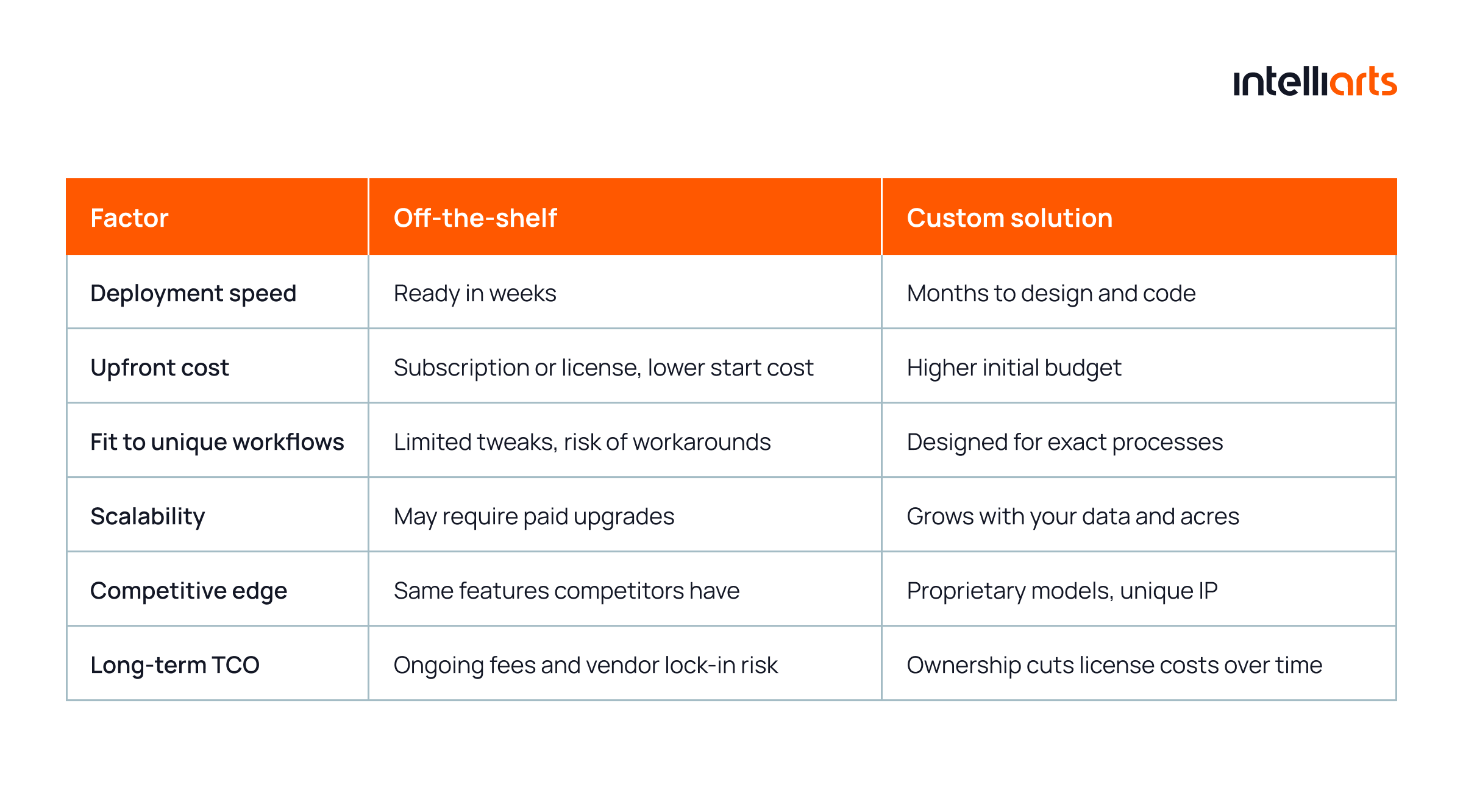
Conclusion
The smart agritech instruments of 2025-2030 are now going beyond automation. They can do more than simply anticipate. Now, top precision agriculture tools can spot plant disease before it can spread, cut irrigation time before the heat spike, and order trucks way in advance of harvest mayhem. If you’ve ever wondered what important role did advanced farming technologies play in helping farms stay resilient, the answer lies in their ability to turn data into timely, profitable action.
With 25 years of experience Intelliarts makes it easy to reach new goals by basing shiny tech on straightforward business mathematics, which growers never felt comfortable doing.
Ready to find out what predictive software will do to your operation? A short conversation about readiness usually finds benefits that are right there in front of you.
FAQ
What are the key advantages of a software-first precision agriculture platform compared to traditional hardware-focused approaches?
Software-first platforms connect the data of all field devices, sensors, and external sources into a single actionable view. Contrary to non-software systems, they are not only concentrated on data collection but also on analytics, prediction, and recommendations. That implies quicker and smarter decisions that are responsive to changes in condition, as opposed to manual feedback.
How does Intelliarts’ use of API-first architectures improve scalability and interoperability in farm management?
The smart integration technology relies on APIs, and we use them to connect to various farming devices. Under API-first architecture, the software is able to integrate with satellites, sensors, tractors, and ERP without the need to customize it heavily. The usual outcome is quicker implementation, reduced headache, and a basis that remains aligned with the developing agtech.
What data inputs are required to start leveraging predictive analytics for harvest planning?
The first step is data collected by different sources: soil moisture sensors, satellite images, previous season yield results, and weather alerts. The input of such abundant information into AI-driven tools will assist in predicting the best harvesting hours and organizing logistics, such as personnel crews and truck paths, minimizing waste of manpower and resources.



